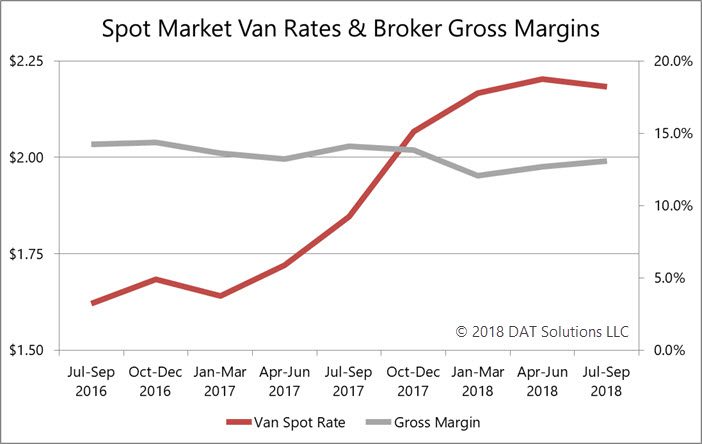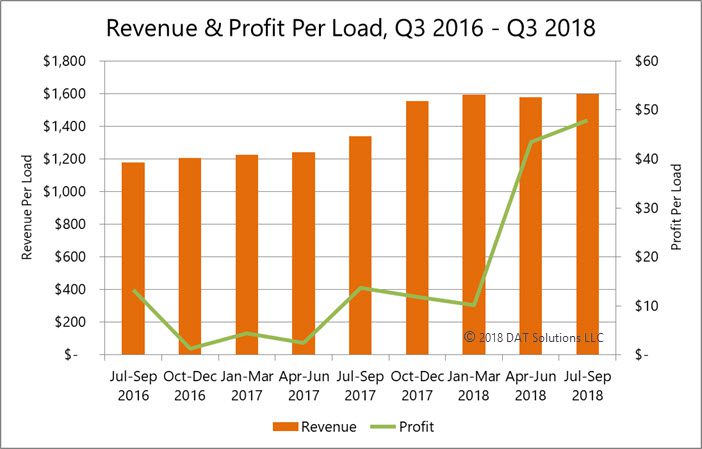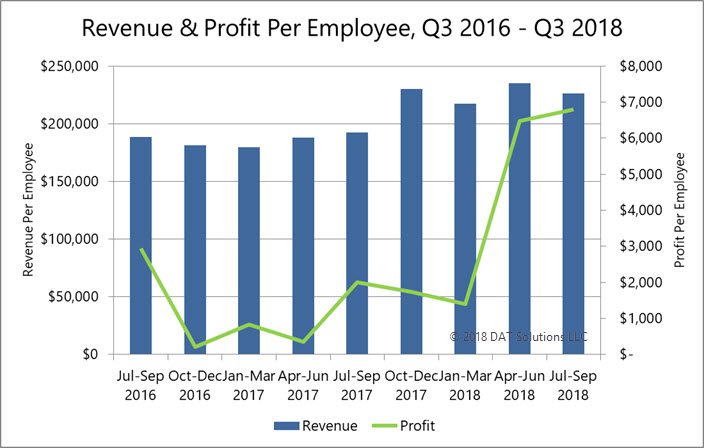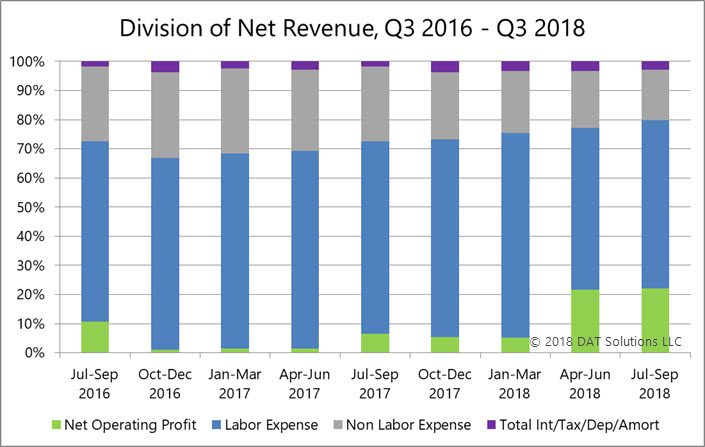Freight brokers posted solid revenue gains and good cost controls in the third quarter, for a sharp increase in net operating profits. Gross margins averaged 13.1% in Q3, which is disappointing, but still the best quarterly result so far this year.
This report is derived from the monthly financial results of more than 100 freight brokerage companies. Their 2017 average annual revenue of $19.5 million has risen 70% in the first nine months of 2018, year over year, putting them on track to exceed $33 million for the year.
Get the full monthly report delivered to your inbox. Subscribe to the DAT Broker Benchmark Report.
Gross margins drop back to 12.1%
First, the not-so-good news. Gross margins dropped back down to 12.1% in September. While the monthly result was disappointing, the Q3 average margin of 13.1% was the best quarterly result this year. Meanwhile, spot market rates stabilized for dry van freight, as a national average. Despite the steady rate per mile, however, the brokers’ total revenue per load was the lowest in 12 months, and profit per load hit the lowest level since March.

A 13.1% average gross margin in Q3 was the best quarterly result this year. Meanwhile, spot market rates stabilized for dry van freight in the third quarter, so the brokers’ total revenue per load was flat compared to Q2, while profit per load rose 10%.

Brokers moved 5% more loads in September, but revenue per load declined 16% and profit per load fell 62%, compared to August. Compared to September 2017, load counts were up 44%, while revenues and profits fell on a per-load basis. Quarterly results, on the other hand, showed slight improvement compared to Q2 and made a huge leap compared to Q3 2017, including a 249% increase in profit per load, year over year.

Brokers staffed up in September to handle business expansion, but the increased head count contributed to a decline in revenue per employee. Quarterly metrics reveal solid growth, with an 18% increase in revenue and 240% higher profit per employee, compared to Q3 2017.

Operating profit set a quarterly record at 22% of net revenue in Q3, despite a sub-par September result of 14%. Net revenue is the amount that’s left after the broker pays the carrier. Despite an increase in head count, brokers held labor expenses to 58% of net revenue, while non-labor expense was just over 17%, and 2.9% went to interest, taxes, depreciation and amortization.

